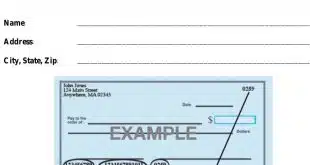With interchange and overdraft-fee revenues under withering political and regulatory attack, debit card issuers can point to one bright spot in their quest for growth—instance issuance of cards in bank and credit-union branches. Some 35% of financial institutions offered the service in 2009, up from 28% in 2008, according to the 2010 Debit Issuer Study sponsored by Discover Financial Services’ Pulse electronic funds transfer network.
What’s more, 22% of financial institutions say instant issuance is one of their top three growth opportunities in 2010, according to the study. “That is definitely one of the things that seems to be a hot topic, and growing,” says Tony Hayes, a partner at Boston-based research firm Oliver Wyman Group, which conducted the study for Pulse.
The results Pulse released this week come from the same study from which the network first announced some findings two months ago (Digital Transactions News, June 16). Oliver Wyman surveyed 64 banks and credit unions with a total of 78.7 million debit cards about their portfolios’ results for 2009.
Consumers typically open a checking account in a branch and receive a debit card about a week later in the mail. Instant issuance does require capital investment in branch-based equipment to create cards. In other respects, however, it has several advantages over the traditional method of issuing debit cards, according to Hayes. Issuers get five to seven days of extra use on each active card, and customer-service costs are reduced because of no need for activation calls. No mailing means reduced postage and increased security, especially when the envelope contains a PIN. And because they can do it right there in the branch, customers activate instantly issued debit cards at a higher rate than they do mailed cards.
Some savvy banks are even using instantly issued debit cards to give customers on-the-spot training in using new imaging ATMs, which many banks see as a high-tech way to boost deposits at the machines. “There are some banks doing it, it’s still not common,” Hayes says.
Some 19% of Oliver Wyman’s respondents offered instant-issuance in all branches last year and 16% in some branches. Thirty-six percent of respondents were considering instant issuance and 30% said they had no plans for it. Last year’s study, for 2008, found that 17% and 11% of respondents had instant issuance in all or some of their branches, respectively. Twenty-six percent and 46%, respectively, were considering or had no plans for it.
In contrast to instance issuance, another debit card marketing tactic that has enjoyed popularity among bankers in recent years—adding rewards—may be peaking. In 2009 58% of financial institutions offered debit card rewards in one form or another, up from 53% in 2008. But the number of issuers considering launching such programs fell from 24% in 2008 to 17% last year, the study says. Reasons: rewards cost money, and debit card revenue streams are under pressure.
Under changes to the Federal Reserve’s Regulation E, banks’ practice of automatically enrolling customers in debit card overdrafts will come to an end Aug. 15. Experts believe fewer than half of customers will opt in to such programs. Plus, while rewards garner issuers higher interchange, interchange next year will be regulated by the Fed thanks to the Dodd-Frank financial reform law that President Obama signed last month (Digital Transactions News, July 21). “The change to Reg E clearly is going to restrict overdrafts, therefore some revenue tied to bank debit card use is going to be curtailed,” says Hayes. “Secondly, there was just the specter of interchange regulation” at the time of the survey, he adds.
Another reason debit card executives may not be too excited about adding rewards programs: while 83% of financial institutions that do offer rewards say they are happy with their programs, only 19% can quantify the direct benefits, the study says.




